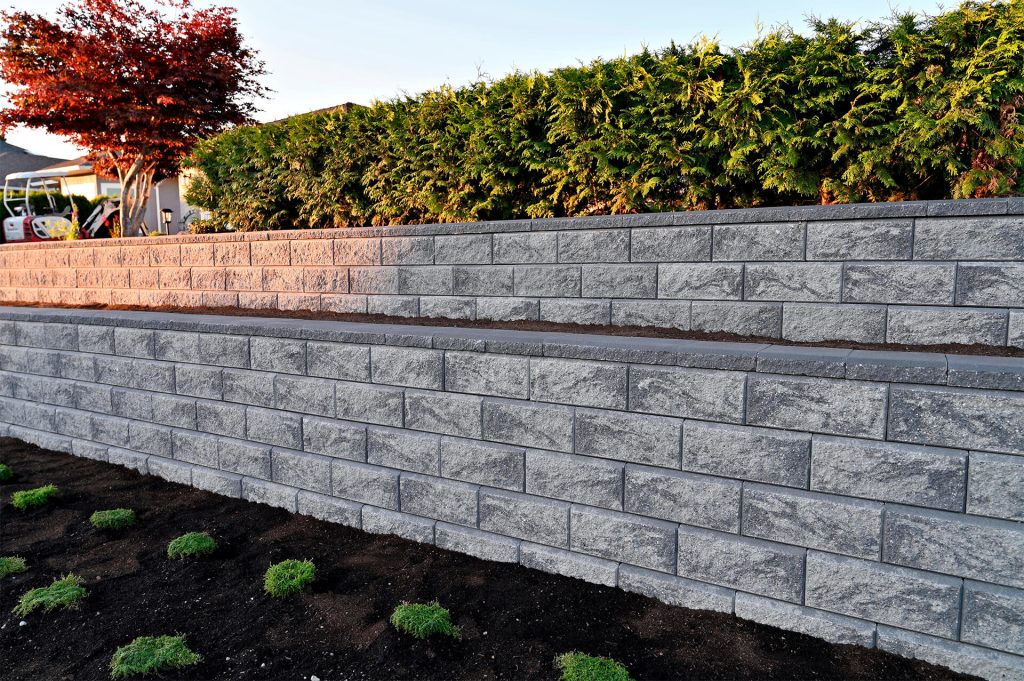
A retaining wall is best to protect the soil of your garden from erosion. It acts as a guard wall to hold the soil of a sloping area. Retaining wall specialists can tell you exactly how to replace a retaining wall because eventually retaining walls can get damaged after a few years. Some people choose to repair them instead of replacing But, if the wall is old, then repairing may not be the ideal way to go. If this is the scenario, you should replace your garden’s retaining wall.
This article will guide the methods of replacing a retaining wall
Reasons for retaining Wall replacement!
There can be different reasons for replacing a retaining wall. A retaining wall holds heavy loads of soil for ages. Naturally, the wall’s strength may reduce over the years. So, the wall may start to lean. Apart from this, the material of the wall can also get damaged. A wooden or timber wall’s wood may begin to rot. A concrete wall may get cracks. Even a stone and brick wall may have some loose sections. If the drainage system in your garden isn’t upright enough, then a retaining wall may collapse.
Why Do Retaining Walls Fail?
Exposed to the hard elements of nature while holding back the pressure from large mounds of soil, retaining walls lose their strength over the years. below are some typical culprits behind retaining wall failure:
- Environmental Factors – If you are in a rainy or windy area, your retaining wall takes a thrashing from the constant pitter-patter of raindrops and impact from breezes of wind. It takes a ding-dong on their composition, which could break down over time.
- Poor Drainage – Water weakens the structural integrity of retaining walls, if they are exposed to high levels of moisture due to poor drainage then your retaining walls could deteriorate faster.
- Improper Installation – If the retaining wall does not have a durable foundation or if it is not installed properly, it worsens much faster.
- Degradation of Materials – Materials degrade over time. Timber walls rot, concrete walls crack, and stone walls become wobbly.
How to Replace a Retaining Wall?
The replacement process differs according to the size and material of the wall plus the extent of the damage. It is strongly advised to let a professional handle the project because they know precisely how to replace a retaining wall:
1. Remove the Retaining Wall
For relatively low and small retaining walls, professionals can quickly remove chunks and pieces without disrupting the soil too much. These walls hold comparatively small mounds, they can be detached without much fuss.
Professionals can exercise extra care when working on large and thick walls because these hold large amounts of soil. They remove some of the earth that the walls are keeping before they dismantle the wall itself. In a few cases, they erect small, temporary support structures to hold the soil while removing the old wall and installing the new one.
2. Check the Foundation
If the existing foundations of the old retaining walls are inadequate, they will fix it. For example, concrete walls would require a strong foundation around half of the full height of the wall. A strong foundation ensures that the wall will be able to hold back the soil and it won’t give means to the weight of the mounds.
3. Install the New Retaining Wall
Once the foundation is strengthened, they start building the new wall according to your landscape requirements and preferences. They make sure to clear the debris for a neat finish.
The timeline for retaining wall replacement relies on the material and the size of the project. In a lot of cases, it would take about three or four days.
When to Repair A Wall?
A timber wall can be fixed by replacing the damaged timber sections. You can change the damaged sections with new wooden boards. Through this, the wall can get back to its full strength. A concrete wall (cracks) can be repaired and you can replace the damaged panels to repair the wall. Don’t overlook these signs for too long, or else, your wall may become weak and you may have to replace it completely.
Removing An Existing Wall
There are two types of retaining walls short retaining walls and tall retaining walls.
Short retaining walls are complex to remove. If it only holds a small amount of soil, it’s easier to remove it without disturbing the shape of the soil.
But you should be mindful when removing tall retaining walls. Your contractor should figure out a temporary structure to hold the soil in place. The professional team should also clear soil near the wall.
Remove the wall gradually. Failure to do so may cause large chunks of soil to collapse resulting in accidents and injuries.
How To Install A New Retaining Wall
The techniques of wall installation vary. When you are building a huge retaining wall you need professional help. An approval from the council must be required to install a larger retaining wall.
To build a wall you have to start from the foundations. Around half of your wall will be inside the ground.
Conclusion:
Replacing a retaining wall can be a tricky task but if you consult with a professional you will be able to have guidance and assistance throughout the process. It can consume a lot of time and energy doing the job yourself and the results aren’t guaranteed. If your wall is damaged then it is best to find an expert who can carry out the job well. He will assess the extent of damage and analyze if your retaining wall needs a repair or replacement because stunning wall transformation awaits you!